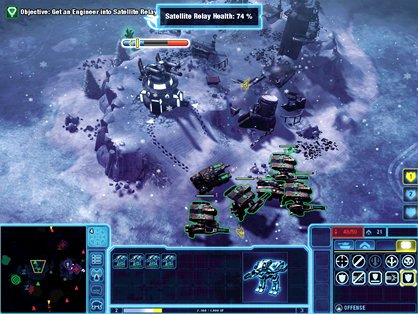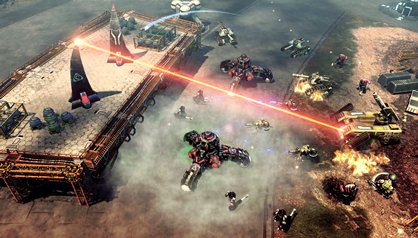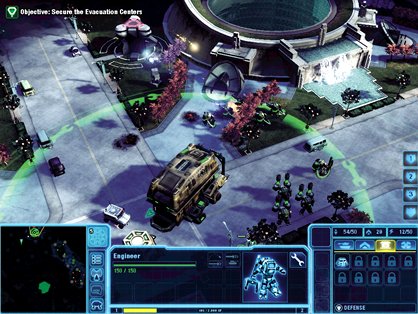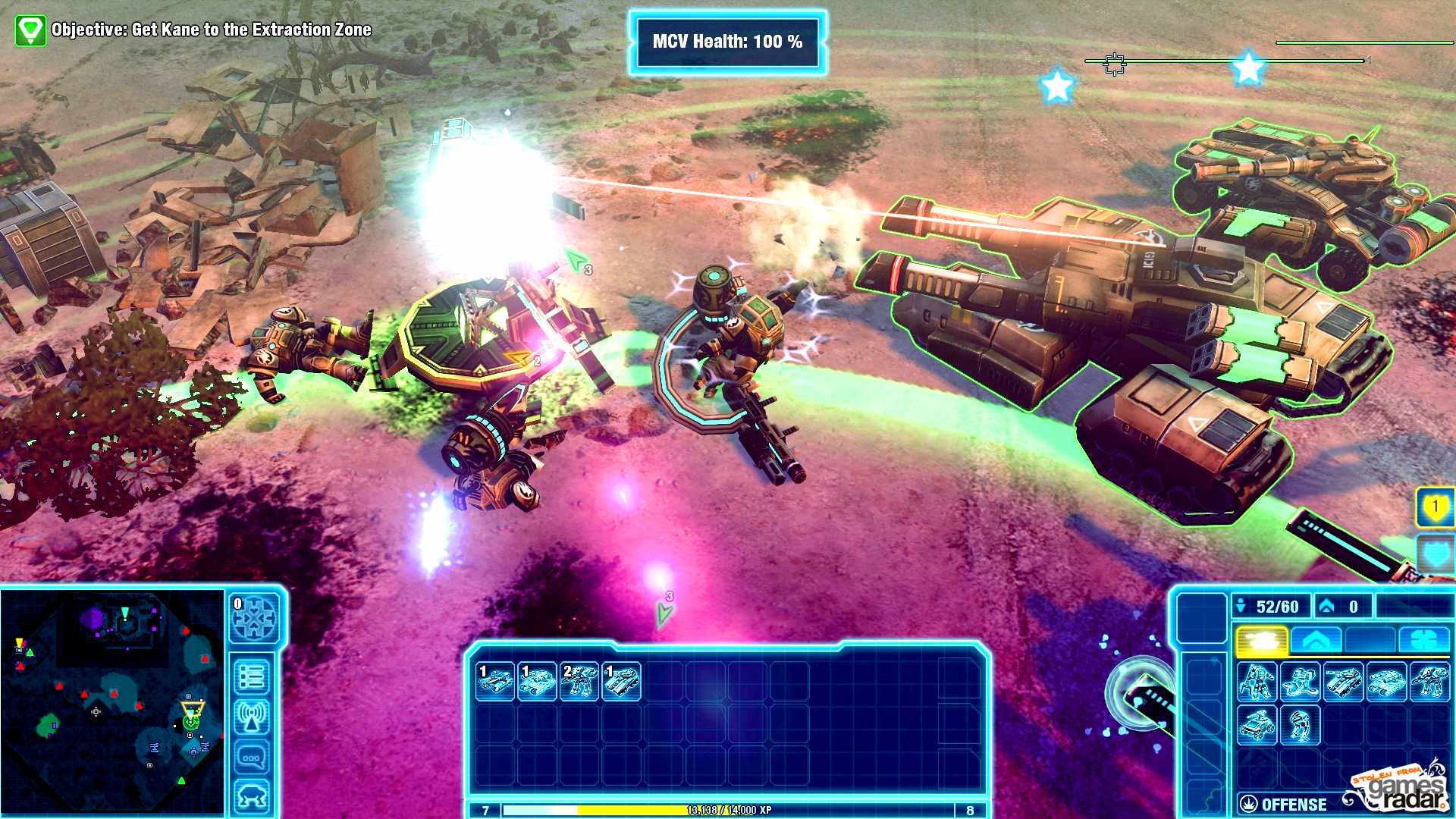GamesRadar+ Verdict
Pros
- +
Mobile bases
- +
Class system adds more strategy and variety
- +
Experience-driven unit unlocks
Cons
- -
Underwhelming single-player campaign
- -
Less economy focus may deter some players
- -
Forced to log in to EA's servers to play
Why you can trust GamesRadar+
In a very unconventional sort of surprise ending, Command & Conquer 4: Tiberian Twilight, the finale of the Tiberium storyline, abandons the basic mechanics the series is built on (kind of like Highlander 2, but not as insane). In fact, virtually nothing connects C&C4 to its long heritage - gameplay is far more reminiscent of World in Conflict than C&C. If not for Joe Kucan and his shiny, goateed dome reprising the role of paramilitary cult leader Kane, and the faction names Nod and GDI, C&C4 could be an unrelated sci-fi tactical strategy game.

How different is it? Instead of harvesting Tiberium resources to build a sturdy base and a diverse army, you deploy a specialized Crawler - a walking, rolling or flying distant relative of C&C’s Mobile Construction Vehicles - in a designated spot on the map, and unfold it to crank out units for free until you hit your unit cap. You then pack up your Crawler, advance (or retreat) to wherever the new front line might be, unpack it again and replenish your forces. If your Crawler is destroyed in battle, you just deploy a new one. So yeah, it’s pretty different.
The pace of combat is constant. Even when you lose every unit you’ve got, it only takes a couple of minutes to go from just your Crawler back up to a full-strength army. No costs are incurred except for build time, so the only incentive to keep units alive is veteran bonuses, earned through combat and from picking up Pac-Man-like power-pellet drops from fallen enemies. Pathfinding is fussy, which is a hassle when trying to ensure that your favorite unit gets the pickup, but I love the visual upgrades (like extra arms on the Nod Avatar walker) when you snag a rare blue powerup.

On that note, the Crawler animations are cool but, on the whole, C&C4 is a graphical step back from C&C: Red Alert 3 - for instance, textures are less detailed, and the weaksauce nuclear missiles look like something Wile E. Coyote might launch at the Road Runner.
What’s most impressive about this game is that with three types of Crawler per faction, there are essentially six distinct armies. And unlike the sub-factions of C&C3: Kane’s Wrath, no overlap exists between the Offense, Defense and Support unit lineups. The choice of which specialization to play is meaningful, since each will force you to adapt your strategies to its strengths. For example, a GDI Support player can’t match a Nod Offensive player’s firepower, but his Orca VTOL craft can easily pick apart an undefended Crawler. If your chosen Crawler isn’t working out, you can always pick another class when you respawn.

More info
| Genre | Strategy |
| Description | In this conclusion to the Tiberium series, the year is 2062 and humanity is at the brink of extinction. With only six years left until the mysterious crystalline structure Tiberium renders the earth entirely uninhabitable, the two opposing factions – Global Defense Initiative (GDI) and the Brotherhood of Nod – inevitably find themselves in desperation for the same cause: to stop Tiberium from extinguishing mankind. |
| Franchise name | Command and Conquer |
| UK franchise name | Command and Conquer |
| Platform | "PC" |
| US censor rating | "Teen" |
| UK censor rating | "16+" |
| Release date | 1 January 1970 (US), 1 January 1970 (UK) |



